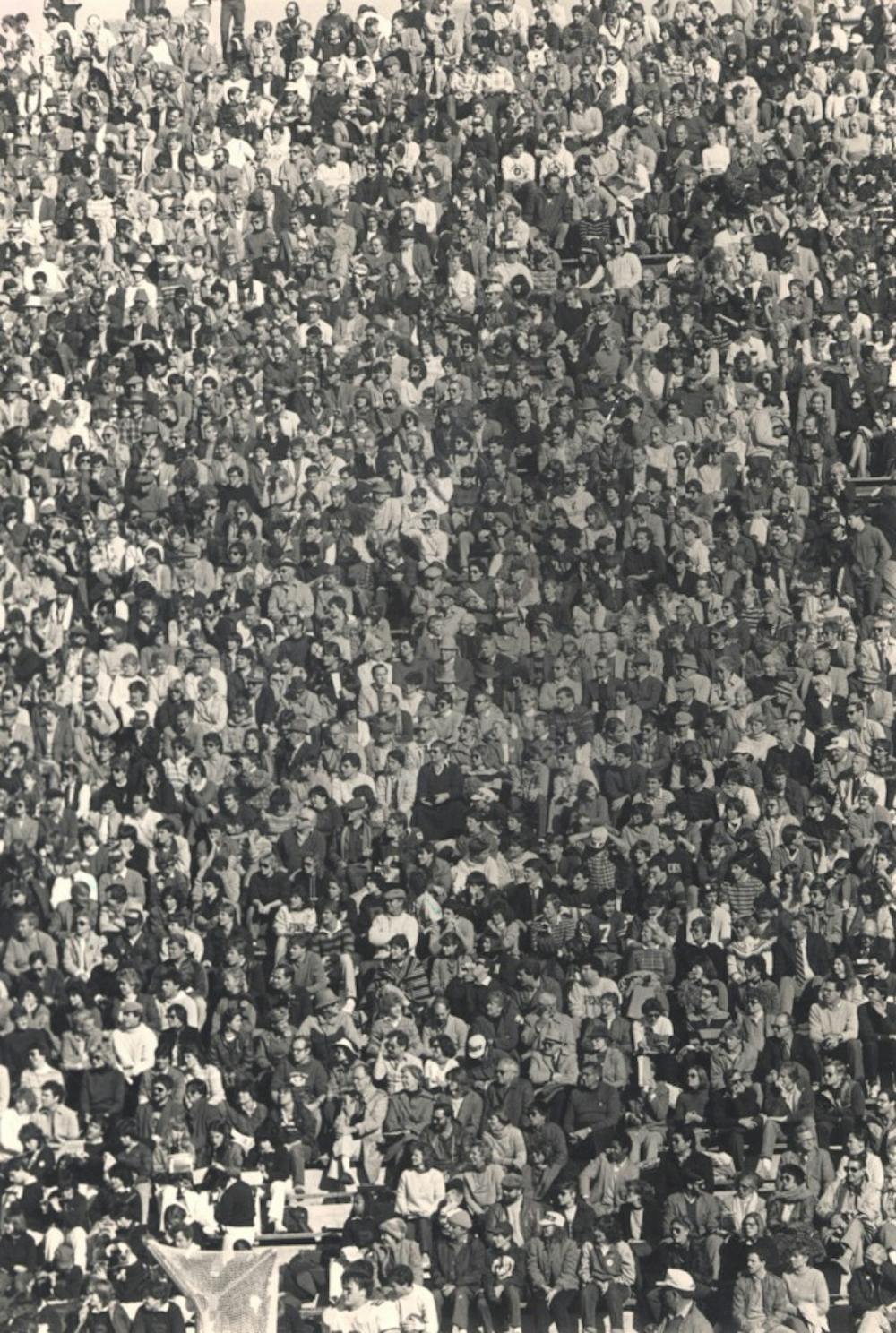
Franklin Field and Penn football were the center of controversy during former President Harold Stassen’s tenure. Stassen attempted to go against the NCAA in 1951 by signing a television contract to broadcast Penn’s eight home games.
It’s not uncommon these days for a national powerhouse to scuffle with the NCAA, with the universities often coming out tarnished.
What isn’t so common is for the Ancient Eight to be involved in these disagreements. Yet former Penn President Harold Stassen led the University into a fight with the NCAA that nearly resulted in Penn’s expulsion from the organization.
What was at stake for Penn was even more unimaginable — the right to televise its own football games.
Stassen was hired by Penn in 1948 after the strongest of his nine unsuccessful attempts to win the Republican presidential nomination. The university was in financial trouble — partly due to an outstanding mortgage on the Palestra and Franklin Field of more than $1.6 million — and the new president was expected to turn things around.
Stassen came to Penn confident that success in academics and on the football field could coexist, planning to get the University out of its financial problems with the revenue from televised football games.
At the time, it was a pretty good idea. The Quakers had finished the 1947 season with a record of 7-0-1 and a No. 7 ranking from the Associated Press.
Shortly after taking office, Stassen scheduled a game against Notre Dame for the 1952 season, in defiance of an unwritten Ivy rule that banned playing the Fighting Irish.
As he alienated his fellow Ivy presidents, the NCAA quickly foiled his plan for television revenue. The organization conducted a study that found that televised games would reduce live attendance at sporting events, leading to a 161-7 vote at the 1951 NCAA convention to ban televised games, aside from a select few chosen by the NCAA staff.
Penn was one of two universities that opposed the new restriction, along with Notre Dame. A few days after Penn announced its decision, it signed a new $200,000 contract with ABC to broadcast its eight home games, agreeing to split the revenue with its opponents.
Many suggested that Stassen was only pursuing his own political goals.
“A good many college people feel that Mr. Stassen’s motive in deciding to televise football games has political overtones; national political overtones,” Irv Marsh wrote in the New York Herald-Tribune. “It is no secret, they say, that Mr. Stassen has had his eye for a long time on the Republican nomination for the Presidency … What could make him more popular to the poor, down-trodden owners of television sets (and there are millions of them) than to parade the fact that he has provided them with circuses as well as bread.”
The NCAA quickly responded to Penn’s protest, declaring that it was no longer a member in good standing and issuing warnings to any team that was scheduled to play the Red and Blue, leading Dartmouth, Columbia, Cornell and Princeton to cancel their games against the Quakers for the 1951 season.
Stassen eventually gave in to the NCAA’s demands, knowing that if the Red and Blue were kicked out of the NCAA, it would be hard to find opponents to play and even harder to make money off the program.
Nonetheless, Stassen never retracted his personal opposition to the NCAA’s ban. When he left the University in 1953, he prepared a document titled “Four Years at Pennsylvania” that detailed his accomplishments during his tenure. Included in the brief Athletics section was an affirmation of Stassen’s stance.
“The NCAA television control program is regarded by the University of Pennsylvania as illegal and unwise; hence we have not participated in it, and have opposed it,” the document read. “Our opposition has thus far been unsuccessful, but it is believed only a question of time before the centralized control scheme sponsored by the NCAA will be abrogated and all universities and colleges will enjoy the same rights and freedom in this respect that they do in other matters.”
Stassen’s tenure at Penn did not last long, but his influence on Penn Athletics was significant. The game against Notre Dame in 1952 brought 80,000 paying customers to Franklin Field (the game ended in a thrilling 7-7 tie). The 1952 team brought in more than $500,000, helping pay for Penn’s other athletic programs.
When Stassen brought Penn to the brink with the NCAA and antagonized his Ivy rivals, he probably never imagined that Penn would have to join forces with the other Ivy League schools to get a TV deal accomplished.
But that’s just what happened in May, when the league signed a two-year contract with NBC Sports Network to air at least six football, six basketball games and up to four men’s lacrosse games a year — not quite the big-time deal Stassen imagined.
SEE ALSO
The president that Penn forgot
Former University president dead at 93
‘Victory with honor’ campaign delivers
The Daily Pennsylvanian is an independent, student-run newspaper. Please consider making a donation to support the coverage that shapes the University. Your generosity ensures a future of strong journalism at Penn.
DonatePlease note All comments are eligible for publication in The Daily Pennsylvanian.








